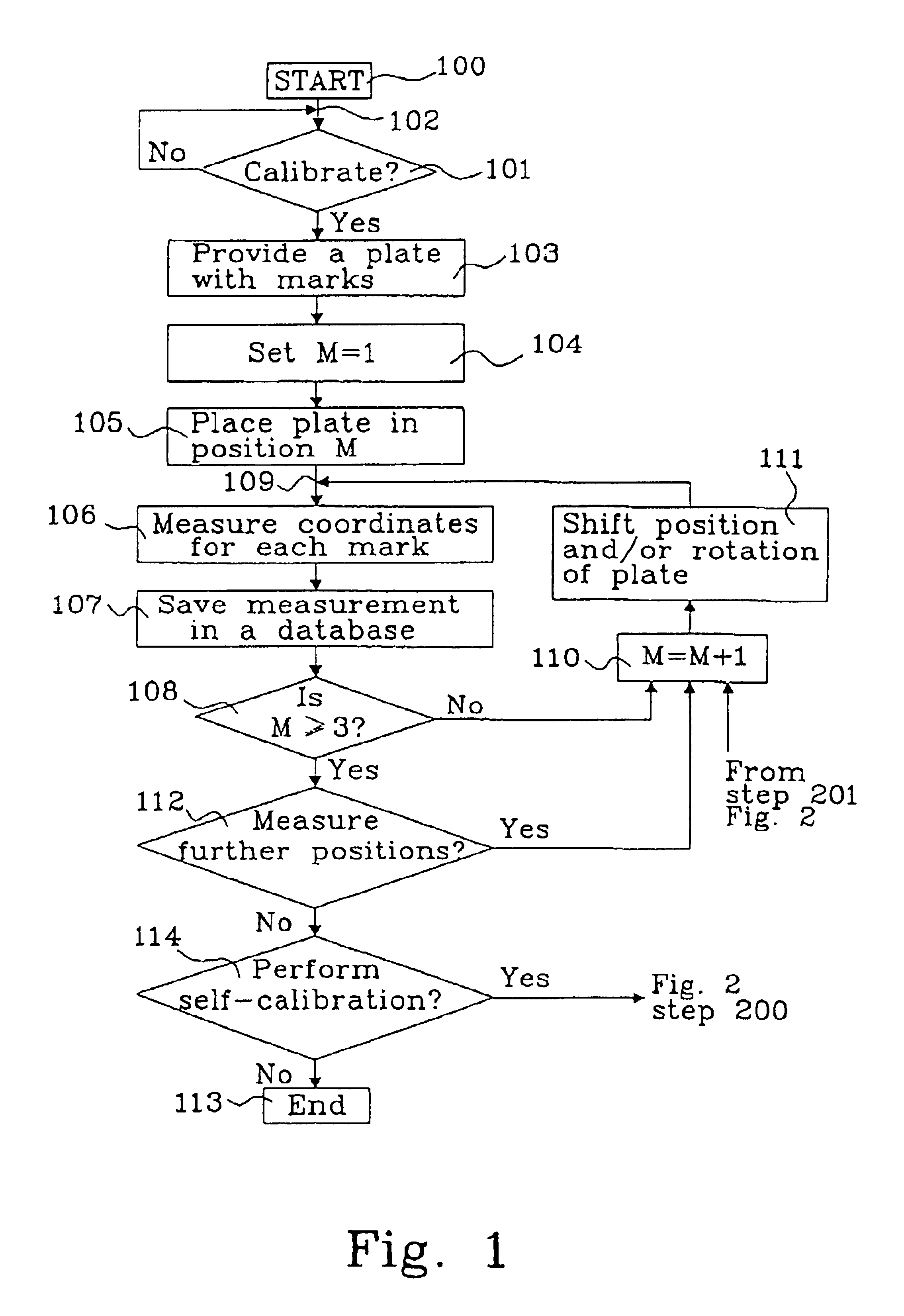Method for calibration of a metrology stage
a metrology stage and calibration method technology, applied in the direction of mechanical measuring arrangements, instruments, photomechanical equipment, etc., can solve the problems of systematic measurement error, stage distortion, and typically manifest stage distortion, and achieve the effect of small line width
- Summary
- Abstract
- Description
- Claims
- Application Information
AI Technical Summary
Benefits of technology
Problems solved by technology
Method used
Image
Examples
Embodiment Construction
[0022]The principal that the method according to the invention is based upon makes it possible to use a calibration plate which is provided with a number of marks arbitrarily scattered across the surface of the plate. A plate provided with N ×N arrays of marks in a grid structure may naturally also be used. The method will provide a possibility to determine the stage distortion function S (x,y) and also the plate distortion function P (x,y) provided at least three different measurement views has been measured including transitional movement and rotational movement as illustrated in connection with examples below.
[0023]The errors between measured positions (ui,vi) and the Cartesian coordinates (xi,yi) for each measurement point i is a result of errors in the plate and / or errors in the stage. Normally both the plate and the stage contribute to the error in measurement.
[0024]The self-calibration is generally performed in the following steps:
[0025]1. A calibration plate with marks arbit...
PUM
 Login to View More
Login to View More Abstract
Description
Claims
Application Information
 Login to View More
Login to View More - R&D
- Intellectual Property
- Life Sciences
- Materials
- Tech Scout
- Unparalleled Data Quality
- Higher Quality Content
- 60% Fewer Hallucinations
Browse by: Latest US Patents, China's latest patents, Technical Efficacy Thesaurus, Application Domain, Technology Topic, Popular Technical Reports.
© 2025 PatSnap. All rights reserved.Legal|Privacy policy|Modern Slavery Act Transparency Statement|Sitemap|About US| Contact US: help@patsnap.com



